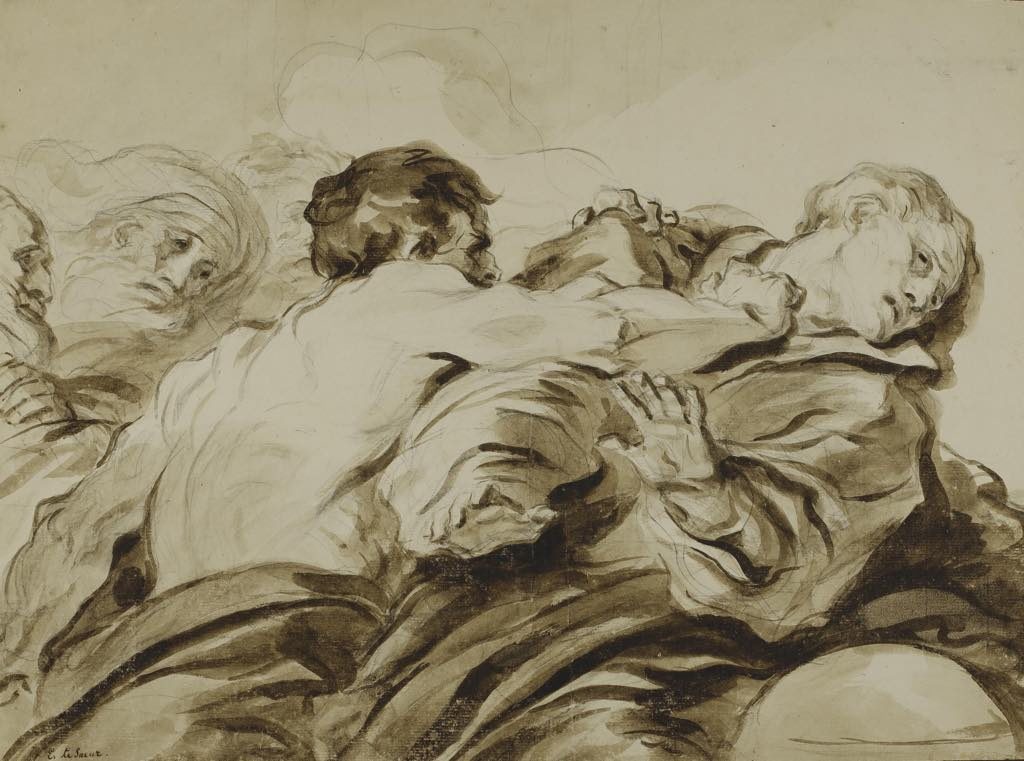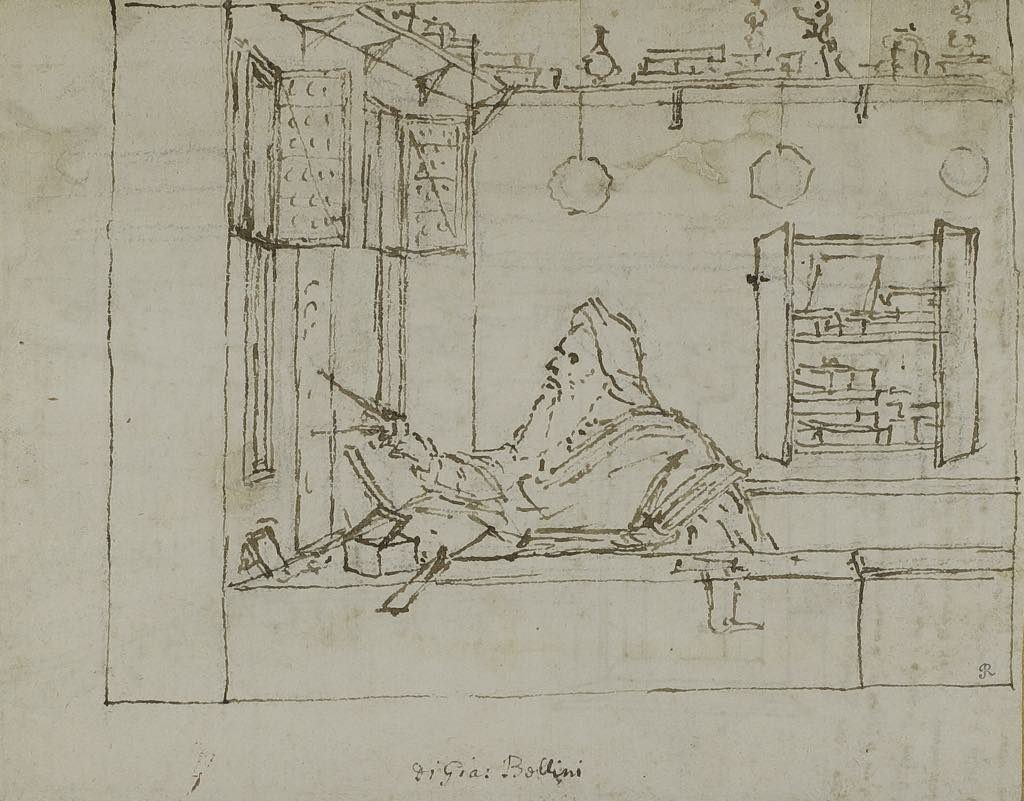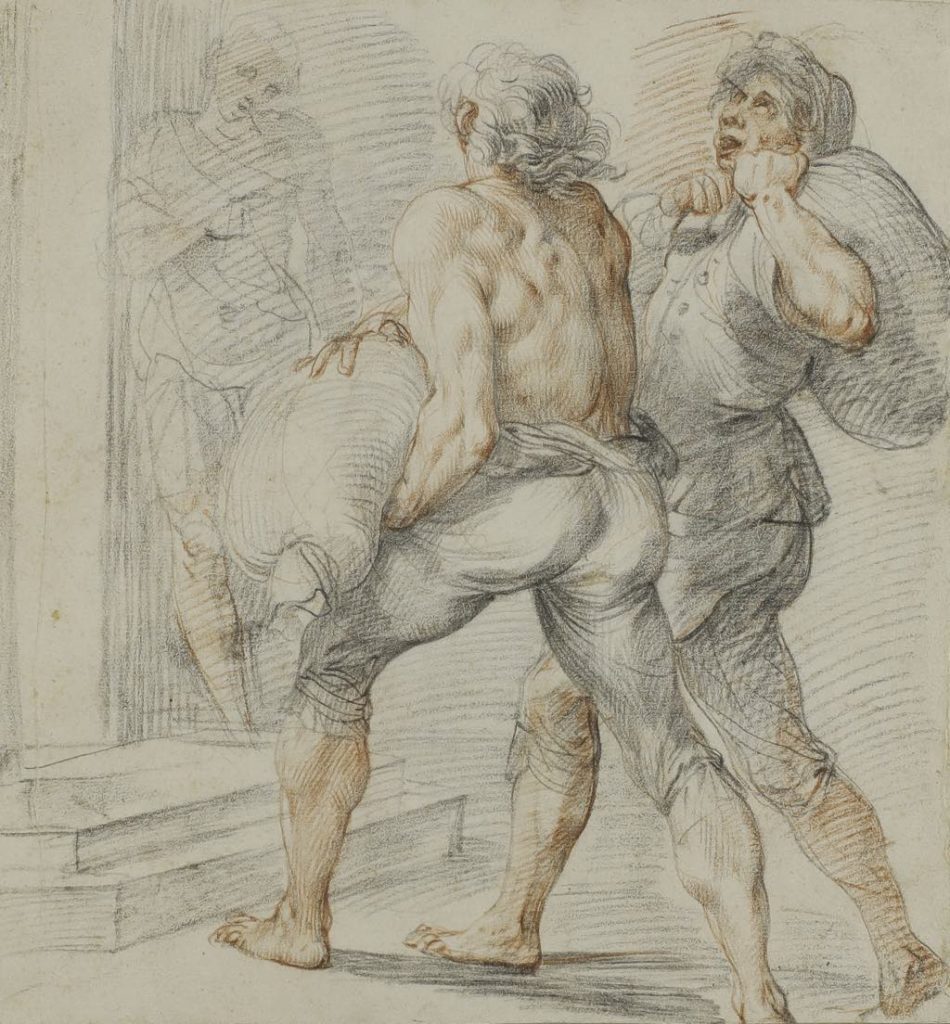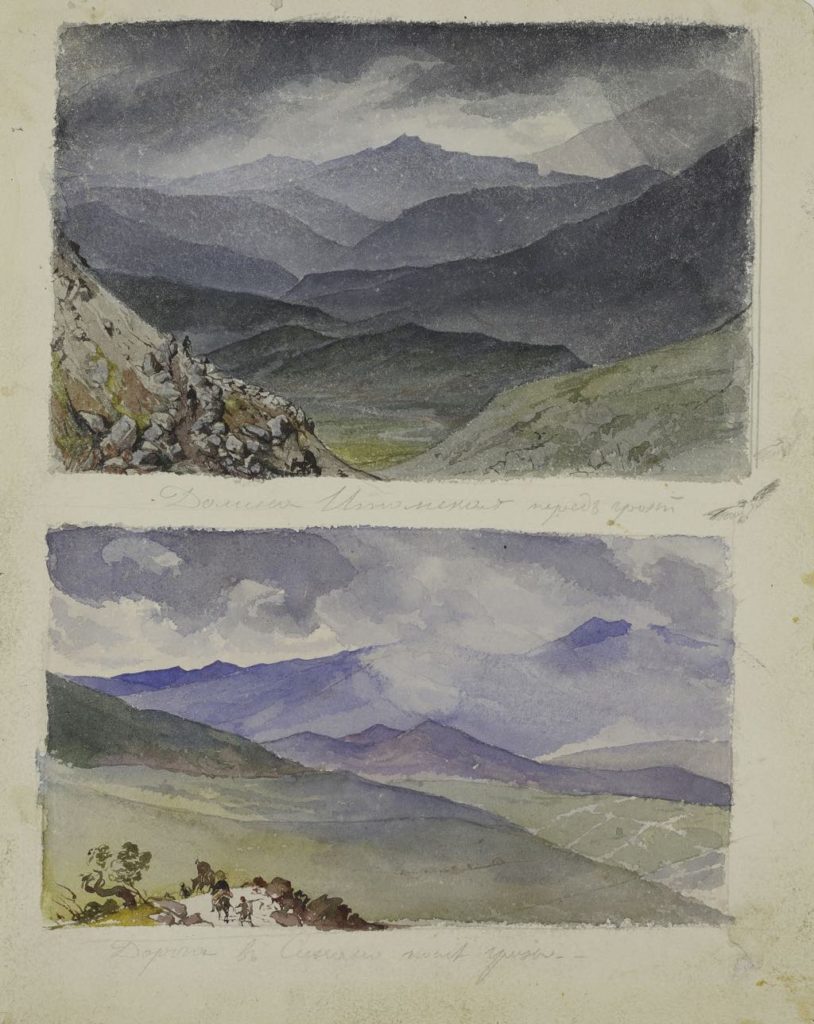
Anyone who loves drawing must not miss the current exhibition at the Fondation Custodia, “The Pushkin Museum: Five Hundred Years of Master Drawings,” a survey of 200 works by some of the greatest artists from the 15th to the 20th centuries.
The show includes innumerable gems. The wonderful thing about drawing is its great versatility. It can depict its subject by merely suggesting, as in Matisse’s marvelous line drawings, or can go into the most intricate detail – and everything in-between, of course. The drawings in this show run the entire gamut.

My eye was first caught by a 500-year-old drawing that falls into the suggestion category: Vittore Carpaccio’s “A Philosopher in his Study Engaged in Geometrical Measurements” (1502-07). The philosopher’s face is drawn with minimal lines, yet his studious concentration is evident. Behind him, we see his study with his instruments and other implements of his trade. Somehow, this simple sketch manages to be full of charm.
Another charmer is the infant Jesus in Peter Paul Rubens’ “Study for ‘Madonna della Vallicella’” (1608), who wears a look of contagious delight that makes you want to laugh with him.
The drawing by Jean-Honoré Fragonard at the top of this page, “The Attack” (late 1770s), brings movement into the picture, with a scene that could come straight out of a Hollywood Western (without the cowboy hats), depicting a violent brawl, so different from the artist’s usual scenes of gallantry and libertinage.

The show includes a few drawings by Giuseppe Cesari, known as the Cavaliere d’Arpino, an artist I was not familiar with. Two of the pieces here, “The Martyrdom of Saint Matthew ” (1591-97) and “Study for the Tax Collectors” (1591-93), were commissioned for the Contarelli Chapel in San Luigi dei Francesi in Rome. Luckily for us, those paintings were never executed, and the young Caravaggio was hired instead to decorate the chapel and painted the three masterpieces that can still be seen in the church today. He originally took inspiration from Cesari’s plan for “The Martyrdom of Saint Matthew,” but later moved away from it to create his own brilliant painting of the scene.

There are many drawings here from the 19th-century Romantic period, among them two lovely watercolor landscapes by Karl Bryullov, “Valley of Itom before the Storm” and “Road to Sinano after the Storm “ (1835), which are reminiscent of William Turner’s watercolors showing the effects of light and weather, painted around the same time (and currently on show in the exhibition “The Courtauld Collection” at the Fondation Louis Vuitton in Paris).
It’s always a pleasure to discover the work of artists you don’t know. That was the case with Bryullov and with several Russian artists working in the 1920s (a nice complement to the exhibition “Red: Art and Utopia in the Land of the Soviets” at the Grand Palais), among them colorful (red) pieces by Nikolaï Koupreyanov (“Red Horse,” 1924) and Alexandre Deïneka (“May First,” 1928).
There is something here for every artistic taste, in just about every imaginable style and genre, including drawings by such famous names as Rembrandt, Poussin, Degas, Van Gogh, Kandinsky, Picasso, Matisse and many others.
The Custodia Foundation gives each visitor a wonderful little booklet (available in French or English) with commentary on each piece in the show, so intelligent that viewers can really learn something about each artist or a particular drawing.
Favorite